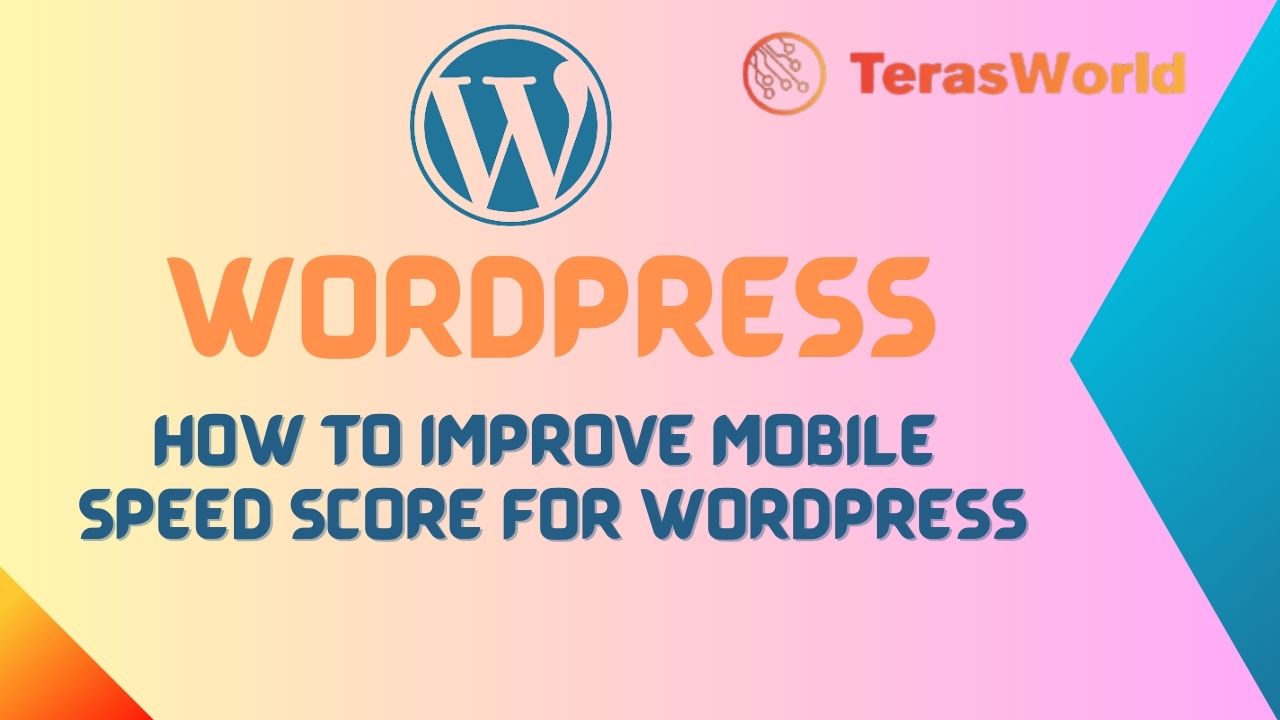Introduction
In today’s digital age, where mobile devices have become an integral part of our lives, ensuring your website loads quickly and smoothly on mobile devices is crucial for providing a seamless user experience. When it comes to WordPress websites, optimizing for mobile speed is not only important for user satisfaction but also plays a significant role in search engine rankings. In this comprehensive guide, we will explore the best practices to improve the mobile speed score of your WordPress site, step by step.
Writing a blog that focuses on improving the mobile speed score of your WordPress site is a valuable initiative for any website owner or blogger. By incorporating relevant keywords in your heading and paragraphs, you can attract more organic traffic and increase your chances of ranking higher on search engine results pages (SERPs).
Understanding the Importance of Mobile Speed
Before we delve into the optimization techniques, let’s understand why mobile speed is so crucial. Mobile users expect fast-loading websites, and Google, as the leading search engine, emphasizes user experience. Websites that load slowly on mobile devices are likely to have higher bounce rates, leading to a negative impact on search rankings.
Analyzing Your Current Mobile Speed Score
The first step in optimizing your website’s mobile speed is to assess its current performance. Several tools are available to help you analyze your mobile speed score, including Google’s PageSpeed Insights and GTmetrix. These tools provide valuable insights into your website’s loading speed and offer suggestions for improvement.
Compressing Images for Faster Loading
One of the main culprits behind slow-loading websites is large image files. To improve your mobile speed score, consider compressing images without compromising their quality. Numerous WordPress plugins can automatically compress images upon upload, making this process effortless.
Implementing Browser Caching
Browser caching allows web browsers to store certain elements of your website, such as images and CSS files, locally on a user’s device. This enables faster loading times upon subsequent visits to your site. Utilizing caching plugins for WordPress can significantly boost your mobile speed score.
Minimizing CSS and JavaScript
Reducing the file size of your CSS and JavaScript resources is another effective way to improve mobile speed. Remove any unnecessary code, whitespace, or comments and consider combining multiple CSS or JavaScript files into one to minimize HTTP requests.
Leveraging Content Delivery Networks (CDNs)
Content Delivery Networks distribute your website’s static resources across multiple servers worldwide. By serving content from the nearest server to the user’s location, CDNs can dramatically reduce loading times, especially for visitors from different geographical locations.
Ensuring Mobile-Friendly Design
Responsive web design is no longer an option; it’s a necessity. Ensure that your WordPress theme is mobile-friendly, adjusting seamlessly to different screen sizes and orientations. A mobile-friendly design improves user experience and positively impacts your mobile speed score.
Enabling AMP (Accelerated Mobile Pages)
Google’s Accelerated Mobile Pages (AMP) project is designed to provide ultra-fast loading times for mobile users. By enabling AMP on your WordPress site, you can create stripped-down versions of your pages that load almost instantly on mobile devices.
Reducing Server Response Time
Server response time plays a crucial role in overall website performance. Optimize your server settings, consider upgrading your hosting plan, or even explore dedicated hosting solutions for better server response times.
Regularly Update Your WordPress Version and Plugins
Keeping your WordPress core and plugins up to date is essential for maintaining optimal performance and security. Outdated software can slow down your website and expose it to potential vulnerabilities.
Monitoring and Testing
Improving mobile speed is an ongoing process. Regularly monitor your website’s performance using tools like Google Analytics and continue testing different optimization techniques to find the best combination for your specific site.
Also Read: WordPress Plugin for Mobile Optimization: Enhancing User Experience on the Go
FAQs
Q: What is the ideal mobile speed score for a WordPress website?
A: There isn’t a specific number to aim for, but a mobile speed score above 80 on Google’s PageSpeed Insights is considered good. However, strive for the best score possible to provide a better user experience.
Q: Can I improve my mobile speed score without technical knowledge?
A: Absolutely! While some optimization techniques may require technical expertise, many plugins and tools are user-friendly, allowing you to enhance mobile speed without extensive technical know-how.
Q: Will improving mobile speed impact my SEO rankings?
A: Yes, it will. Google considers mobile-friendliness and loading speed as ranking factors. A faster website improves user experience, leading to better SEO performance.
Q: Are CDNs free to use?
A: Some CDNs offer free plans with limited features, while others have tiered pricing based on usage. Assess your website’s needs and choose a CDN that fits your requirements and budget.
Q: Can I use AMP on all my WordPress pages?
A: AMP is best suited for static content, such as blog posts and articles. Dynamic elements, like interactive forms, may not work optimally with AMP.
Q: Should I sacrifice image quality to improve mobile speed?
A: No, you don’t have to compromise image quality. Use image compression plugins that maintain the visual integrity while reducing file size.
Conclusion
A fast-loading website is essential for a positive user experience and better search engine rankings. By following the tips outlined in this article, you can significantly improve the mobile speed score of your WordPress website. Remember to regularly monitor your site’s performance and continue experimenting with different optimization techniques to achieve the best results.




